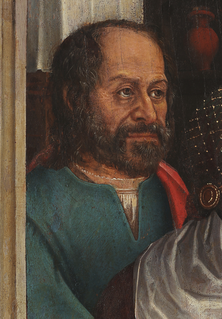 W
WJoão de Barros, called the Portuguese Livy, is one of the first great Portuguese historians, most famous for his Décadas da Ásia, a history of the Portuguese in India, Asia, and southeast Africa.
 W
WAntónio Ferreira was a Portuguese poet and the foremost representative of the classical school, founded by Francisco de Sá de Miranda. His most considerable work, Castro, is the first tragedy in Portuguese, and the second in modern European literature.
 W
WGaspar Frutuoso was a Portuguese priest, historian and humanist from the island of São Miguel, in the Portuguese archipelago of the Azores. His major contribution to Portuguese history was his detailed descriptions of the history and geography of the Azores, Madeira, Canary Islands and references to Cape Verde, which he published in his six-part tome Saudades da Terra, as well as Saudades do Céu. He is normally cited in settlement history of the islands of the Azores.
 W
WDamião de Góis, born in Alenquer, Portugal, was an important Portuguese humanist philosopher. He was a friend and student of Erasmus. He was appointed secretary to the Portuguese factory in Antwerp in 1523 by King John III of Portugal. He compiled one of the first accounts on Ethiopian Christianity.
 W
WFrancisco de Holanda was a Portuguese court painter and sculptor for King João III of Portugal, and later for Sebastian of Portugal. He wrote what is regarded as the first treatise on portrait painting in Europe, Do tirar polo natural (1549). He is considered to be one of the most important figures of the Portuguese Renaissance, also being an essayist, architect and historian. He represented the intelligible reality of the Holy Trinity through a "hypothetical" syntax of geometrical figures. He insisted on the contrast between the ideal plane, the incorporeal form and the "imperfect copy in the terrestrial zone". His visual language demonstrated a mixture of Neoplatonism, Christian Kabbalah and finally Lullism. In education, Francisco de Holanda emphasized mathematics and geometry, subsequently anticipating Clavius's reforms of the late 16th century. Sylvie Deswarte said that "Francisco de Holanda gives a privileged place to cosmography and astrology in the education of the painter. On par with geometry, mathematics and perspective, he recommended them [...] in order to reach the heavens in the hope of one day arriving to the Empyrean and realizing celestial works."
 W
WPedro Nunes was a Portuguese mathematician, cosmographer, and professor, from a New Christian family.
 W
WJerónimo Osório da Fonseca was a Portuguese Roman Catholic humanist bishop, historian and polemicist. An extensive notice of his life and thought (Vita) was written by his nephew, a canon of Évora also named Jerónimo Osório, to introduce his edition of his uncle's Complete Works published in 1592.
 W
WInfante D. Pedro, Duke of Coimbra KG, was a Portuguese infante (prince) of the House of Aviz, son of King John I of Portugal and his wife Philippa of Lancaster, daughter of John of Gaunt. In Portugal, he is better known as Infante D. Pedro das Sete Partidas [do Mundo], "of the Seven Parts [of the World]" because of his travels. Possibly the best-travelled prince of his time, he was regent between 1439 and 1448. He was also 1st Lord of Montemor-o-Velho, Aveiro, Tentúgal, Cernache, Pereira, Condeixa and Lousã.
 W
WMiguel da Silva was a Portuguese nobleman, the second son of Diogo da Silva, 1st Count of Portalegre and of his wife Maria de Ayala, a Castilian noblewomen. He was ambassador of the king of Portugal to several popes, and papal ambassador to the Emperor and others.